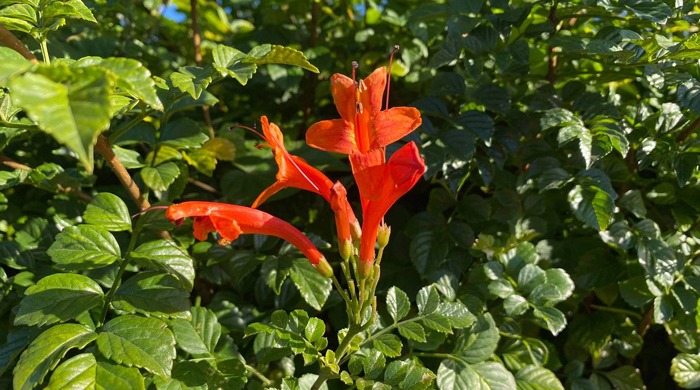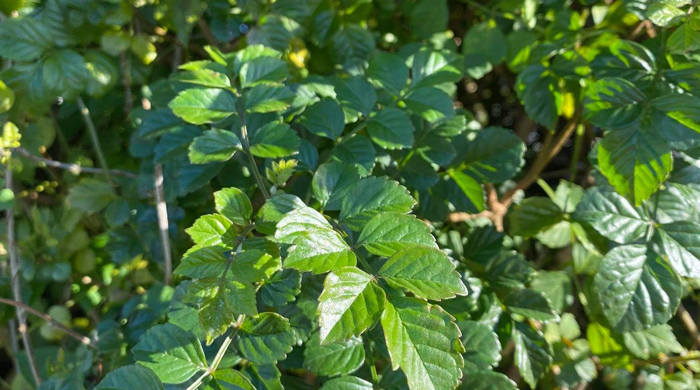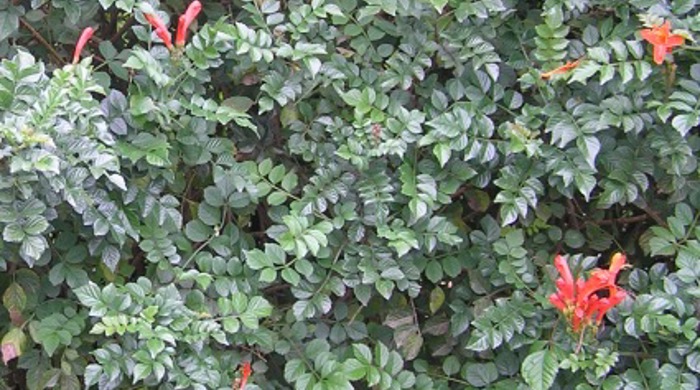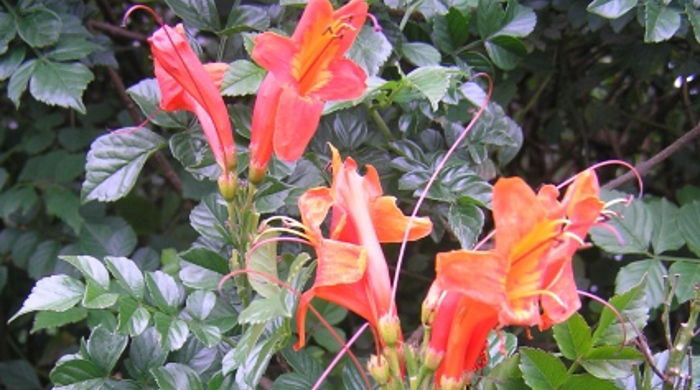Tecomaria capensis
Cape honeysuckle
Family: Bignoniaceae
Origin: South Africa

Regional Pest Management Plan (RPMP) status
- Not a legally declared pest
General description
Rambling perennial shrub < 4 m tall. Leaves are small and pinnate, with < 9 opposite, serrated, rounded leaflets. Flowers are < 5 cm long, orange-red, tubular and borne year-round. Seed capsules are flattened, < 6 x 5 cm and leathery.
What you need to know
Although Cape honeysuckle is not a legally declared pest plant, it may still be invasive in some situations. Consider lower risk alternatives for your garden, such as native plants.
Habitats
Coastal cliffs, scrub, forest margins, gardens, hedgerows.
Dispersal
Seeds are dispersed by wind, but seed set rare in New Zealand. Vegetative spread from layering. Human-mediated dispersal through dumping of garden waste.
Impact on environment
Can form dense stands and smother native vegetation. May provide habitat refuge for rabbits.
Control
Site management
Follow up treated areas 3 times per year. Encourage natural regeneration of native plants or replant treated areas where possible after 2-3 treatments to establish dense ground cover and minimise reinvasion.
Recommended approaches
Physical control
Method: Dig out.
Plant parts requiring disposal: All parts.
Disposal options: Remove to greenwaste or landfill if practical.
Biocontrol
Biocontrol is currently not available for this species.
Community agrichemical control recommendations
No qualifications: Cut stump and paste freshly cut base of stems with metsulfuron gel.
Basic Growsafe certified: Cut stump and spray freshly cut base with 1g metsulfuron-methyl per 1 L of water.
Certified Handler/Experienced agrichemical user: Foliar spray with 5g metsulfuron-methyl per 10L of water and 20ml penetrant.
Caution: When using any herbicide or pesticide please read the label thoroughly to ensure that all instructions and safety requirements are followed.







